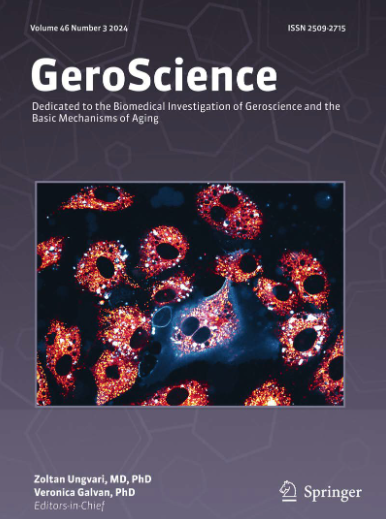桥接治疗与直接血管内取栓治疗基底动脉闭塞性卒中:一项系统回顾和荟萃分析。
IF 5.4
2区 医学
Q1 GERIATRICS & GERONTOLOGY
引用次数: 0
摘要
桥接治疗基底动脉闭塞的益处和安全性尚不清楚,尽管目前的指南基于微弱的证据和与前循环卒中的类比推荐桥接治疗。这项研究比较了桥接静脉溶栓和血管内取栓与直接血管内取栓在一个比以往更大的基底动脉闭塞人群中。系统检索Embase、PubMed、Scopus、Web of Science和Cochrane Library。包括90天功能独立(mRS: 0-2)、90天独立活动(mRS: 0-3)、成功再通、症状性颅内出血、任何类型颅内出血和90天死亡率的研究。两名审稿人独立提取数据并使用ROBINS-I评估偏倚。采用随机效应模型。该协议在PROSPERO (CRD42024519161)中注册。58项研究共9372名受试者被纳入最终分析。桥接治疗与较高的90天功能独立性(OR 1.46; 95% CI 1.22-1.76; p < 0.001)和较低的90天死亡率(OR 0.63; 95% CI 0.49-0.82; p = 0.002)相关。再通率(OR 0.97; 95% CI 0.79-1.18; p = 0.707)或症状性颅内出血(OR 0.88; 95% CI 0.65-1.18; p = 0.330)无显著差异。根据卒中严重程度、治疗窗口、闭塞部位和研究部位定义的亚组获益一致。在所有亚组中,与直接血管内取栓相比,基底动脉闭塞患者的桥接治疗导致更高的功能独立性和更低的死亡率,而不会增加颅内出血的发生率。本文章由计算机程序翻译,如有差异,请以英文原文为准。
Bridging therapy versus direct endovascular thrombectomy in basilar artery occlusion stroke: a systematic review and meta-analysis.
The benefits and safety of bridging therapy in basilar artery occlusion remain unclear, although current guidelines recommend it based on weak evidence and analogy to anterior circulation strokes. This study compares bridging intravenous thrombolysis and endovascular thrombectomy versus direct endovascular thrombectomy in a larger-than-ever basilar artery occlusion Population. Embase, PubMed, Scopus, Web of Science, and Cochrane Library were systematically searched. Studies that reported 90-day functional independence (mRS: 0-2), 90-day independent ambulation (mRS: 0-3), successful recanalization, symptomatic intracranial hemorrhage, any type of intracranial hemorrhage, and 90-day mortality were included. Two reviewers independently extracted data and assessed bias using ROBINS-I. A random-effects model was used. The protocol was registered in PROSPERO (CRD42024519161). Fifty-eight studies with 9372 subjects were included in the final analysis. Bridging therapy was associated with higher 90-day functional independence (OR 1.46; 95% CI 1.22-1.76; p < 0.001) and lower 90-day mortality (OR 0.63; 95% CI 0.49-0.82; p = 0.002). No significant differences were found in recanalization rate (OR 0.97; 95% CI 0.79-1.18; p = 0.707) or symptomatic intracranial hemorrhage (OR 0.88; 95% CI 0.65-1.18; p = 0.330). Benefits were consistent across subgroups defined by stroke severity, treatment window, occlusion site, and study site. Bridging therapy for basilar artery occlusion patients leads to a higher rate of functional independence and lower mortality without increasing the rate of intracranial hemorrhage compared to direct endovascular thrombectomy consistently across all subgroups.
求助全文
通过发布文献求助,成功后即可免费获取论文全文。
去求助
来源期刊

GeroScience
Medicine-Complementary and Alternative Medicine
CiteScore
10.50
自引率
5.40%
发文量
182
期刊介绍:
GeroScience is a bi-monthly, international, peer-reviewed journal that publishes articles related to research in the biology of aging and research on biomedical applications that impact aging. The scope of articles to be considered include evolutionary biology, biophysics, genetics, genomics, proteomics, molecular biology, cell biology, biochemistry, endocrinology, immunology, physiology, pharmacology, neuroscience, and psychology.
 求助内容:
求助内容: 应助结果提醒方式:
应助结果提醒方式:


